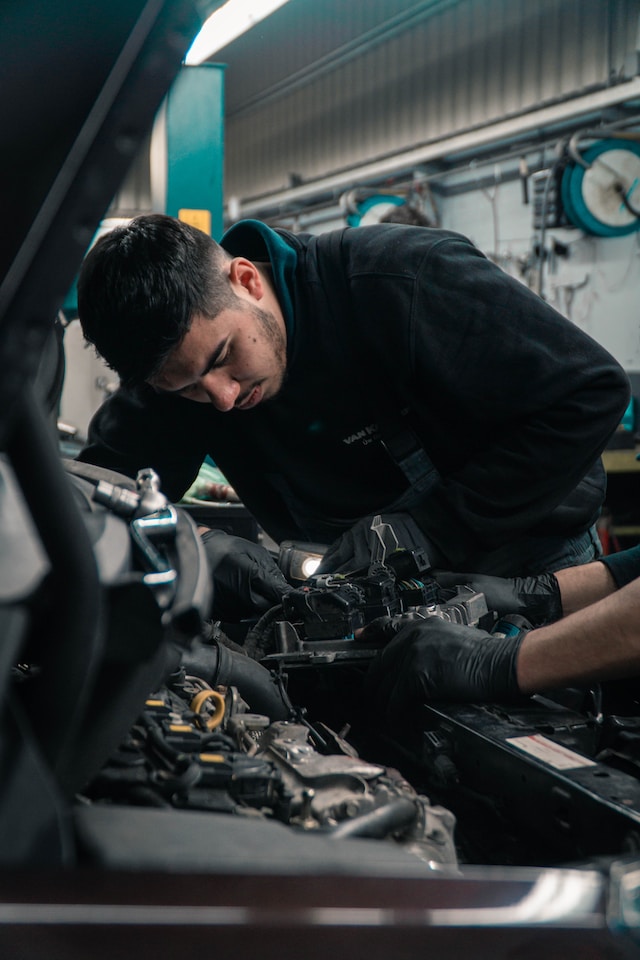
Responsibility for Repairs on a Leased Car: Navigating Maintenance Obligations
Leasing a car offers the advantage of driving a new vehicle without the long-term commitment of ownership. However, when it comes to repairs and maintenance, the lines of responsibility can sometimes be unclear. In this guide, we’ll explore the common practices and expectations regarding who is responsible for repairs on a leased car.
1. Understanding Routine Maintenance

Photo de Erik Mclean sur Unsplash
1.1 Routine Maintenance Responsibilities
Routine maintenance on a leased car is typically the responsibility of the lessee, the person leasing the vehicle. This includes tasks such as oil changes, tire rotations, and brake inspections, essential for keeping the car in good condition.
1.2 Manufacturer’s Recommendations
Lessees are generally expected to adhere to the manufacturer’s maintenance recommendations, ensuring that the car is serviced according to the prescribed intervals using approved replacement parts.
2. The Role of Wear and Tear

Photo de Oli Woodman sur Unsplash
2.1 Wear and Tear Considerations
Normal wear and tear, which occurs as a result of everyday use, is generally accepted as part of leasing agreements. Lessees are not typically held responsible for the natural wear that occurs over time, such as minor scratches and dings.
2.2 Lease-End Inspections
During lease-end inspections, the lessor will assess the vehicle for excess wear and tear. Excessive damage beyond normal wear may incur additional charges, emphasizing the importance of responsible vehicle usage.
3. Repairs Due to Accidents or Negligence
3.1 Accidents and Insurance
If the car requires repairs due to an accident or negligence, the responsibility often falls on the lessee’s insurance. Lessees are expected to maintain insurance coverage that includes liability, comprehensive, and collision coverage to address such situations.
3.2 Repair Authorization and Quality
In cases where repairs are necessary, the lessee may need to obtain authorization from the lessor before proceeding. It is crucial to ensure that repairs are conducted according to the lessor’s specifications and using approved parts.
4. Additional Considerations
4.1 Extended Warranty and Maintenance Packages
Some lease agreements may offer the option to purchase extended warranties or maintenance packages. These packages can cover certain repairs and routine maintenance tasks, providing lessees with added peace of mind.
4.2 Mileage Limitations
Exceeding mileage limitations specified in the lease agreement may result in additional charges. Regular maintenance becomes even more critical for lessees who anticipate exceeding their allotted mileage.
5. External Perspectives and Insights
Enhance your understanding of responsibility for repairs on a leased car by exploring external perspectives:
- Zero Deposit Car Leasing – Delve into the discussion on whether maintenance on a lease is worth it and explore the considerations.
- Inside Car Guys – Gain insights into car lease maintenance practices and considerations for lessees.
- Nolo – Explore legal aspects of leasing a car, including responsibilities for maintenance and repairs.
- Mr Tyre – Learn about the responsibilities for lease car repairs, including insights into maintenance obligations.
- Finn – Understand who is responsible for repairs on a leased car and the importance of adhering to manufacturer recommendations.
1. The Leasing Agreement and Routine Maintenance

Photo de Grant Ritchie sur Unsplash
1.1 Leasing Agreement Terms
The terms of routine maintenance are typically outlined in the leasing agreement. Lessees are responsible for adhering to these terms, including scheduled maintenance tasks such as oil changes, fluid checks, and tire rotations.
1.2 Manufacturer’s Guidelines
Following the manufacturer’s guidelines for routine maintenance is not only a leasing obligation but also crucial for the longevity and performance of the leased vehicle.
2. Wear and Tear: Defining the Limits

Photo de Erik Mclean sur Unsplash
2.1 Normal Wear and Tear
Normal wear and tear, such as minor scratches and dings, is generally accepted as part of leasing. Lessees are not typically held responsible for these normal signs of usage.
2.2 Lease-End Inspections
During lease-end inspections, lessors assess the vehicle for excess wear and tear. Lessees should be aware of the guidelines and prepare for any potential charges related to excessive wear.
3. Accidents, Negligence, and Insurance
3.1 Accidents and Collision Repairs
In cases of accidents or damage due to negligence, the lessee’s insurance comes into play. Lessees are obligated to maintain insurance coverage that addresses liability, comprehensive, and collision aspects.
3.2 Repair Authorization and Quality
Before proceeding with repairs, lessees may need authorization from the lessor. It’s essential to ensure that repairs meet the lessor’s specifications and use approved replacement parts.
4. Additional Considerations for Lessees

Photo de Sten Rademaker sur Unsplash
4.1 Extended Warranties and Maintenance Packages
Some lease agreements offer extended warranties or maintenance packages. Lessees should consider these options for added coverage against unexpected repairs and maintenance costs.
4.2 Mileage Limitations and Regular Maintenance
Exceeding mileage limits can result in additional charges. Regular maintenance becomes even more critical for lessees planning to surpass their allotted mileage to keep the vehicle in optimal condition.
Conclusion
Navigating the responsibilities for repairs on a leased car involves understanding the terms of the lease agreement and adhering to routine maintenance practices. Lessees play a vital role in keeping the vehicle in good condition, while insurance coverage and adherence to lease terms contribute to a seamless leasing experience. Always consult the specific terms of your lease agreement and seek guidance from the lessor for clarity on maintenance and repair obligations.




